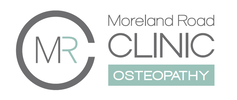Osteopathic principles are one of the defining aspects of the profession.
A.T. Still, the founder of osteopathy, famously declared "Osteopathy is a philosophy".
He held that there was no specific set of techniques that would always help with a certain condition or disease. Understanding basic principles of anatomy, physiology, and chemistry as they pertain to health, growth and development, would naturally lead to appropriate choices of technique and treatment.
He also admonished practitioners that "to find health should be the object of the doctor; any fool can find disease" (there are several variations of this quote, but the message remains remarkably apt over a hundred years later)
Osteopaths are trained to regard each person as an individual, and as a whole.
Generally, we try to make the human body easier to understand by breaking it down into parts: the nervous system, respiratory system, circulatory system etc. There are specialists for each type, and further specialisations within. We even name all the muscles (trust us, we had to learn all of them!).
The truth isn't as clear-cut. The circulatory system is intertwined throughout and delivers blood to the entire body. Likewise, the nerves are everywhere, carrying instructions and even nutrition to the farthest reaches of your body. Another 'unifying system' is fascia, a connective tissue that envelops and supports everything in the body, from individual nerve and muscle fibres to blood vessels to organs.
This is why even the idea of individual muscles begins to make less sense. The first year anatomy lecturer at the British School of Osteopathy used to say; "Think of it like one muscle with (roughly) 650 compartments",
Osteopaths are trained to look at the whole, not just the part that hurts. And with an average appointment being 30-40 minutes, we have the time to explore all the possibilities. Every patient is unique, and osteopathy attempts to take that into account.
A.T. Still, the founder of osteopathy, famously declared "Osteopathy is a philosophy".
He held that there was no specific set of techniques that would always help with a certain condition or disease. Understanding basic principles of anatomy, physiology, and chemistry as they pertain to health, growth and development, would naturally lead to appropriate choices of technique and treatment.
He also admonished practitioners that "to find health should be the object of the doctor; any fool can find disease" (there are several variations of this quote, but the message remains remarkably apt over a hundred years later)
Osteopaths are trained to regard each person as an individual, and as a whole.
Generally, we try to make the human body easier to understand by breaking it down into parts: the nervous system, respiratory system, circulatory system etc. There are specialists for each type, and further specialisations within. We even name all the muscles (trust us, we had to learn all of them!).
The truth isn't as clear-cut. The circulatory system is intertwined throughout and delivers blood to the entire body. Likewise, the nerves are everywhere, carrying instructions and even nutrition to the farthest reaches of your body. Another 'unifying system' is fascia, a connective tissue that envelops and supports everything in the body, from individual nerve and muscle fibres to blood vessels to organs.
This is why even the idea of individual muscles begins to make less sense. The first year anatomy lecturer at the British School of Osteopathy used to say; "Think of it like one muscle with (roughly) 650 compartments",
Osteopaths are trained to look at the whole, not just the part that hurts. And with an average appointment being 30-40 minutes, we have the time to explore all the possibilities. Every patient is unique, and osteopathy attempts to take that into account.
Osteopathic principles
1. That the human body is an integrated unit (in which structure and function are reciprocally and mutually interdependent)
All systems in the body are connected, and rely on each other. This means disease and dysfunction in one area of the body will have effects on others, but it also means we can use one system as a way of helping to improve the health of the rest. In such a way, osteopaths use the musculoskeletal system to have a beneficial effect on the nervous, vascular and lymphatic systems. These in turn help to support and nourish the rest of the body*.
2. The human body is self regulating and self healing in the face of challenges and diseases (this is known as homeostasis)
The quote "the body is its own medicine chest", attributed to Still, is often used to explain this principle. The body has its own healing mechanisms, these can be stimulated and supported by removing restrictions to the flow of nerves, blood and lymph (see below). Still was vehemently opposed to medications (although it should be remembered that this was before antibiotics, or antiviral drugs), and believed the body itself capable of healing almost any ailment.
3. The optimum function of the body's systems is dependent upon the unimpeded flow of blood and nerve impulses.
Or as A.T. Still put it, "the rule of the artery is supreme".
The major way that musculoskeletal system can influence the rest of the body is through its effect on nerves and the flow of fluid within the system. Dysfunction in the joints and muscles, for example, may interfere with breathing, imparing the efficiency of blood and lymph flow.
The major way that musculoskeletal system can influence the rest of the body is through its effect on nerves and the flow of fluid within the system. Dysfunction in the joints and muscles, for example, may interfere with breathing, imparing the efficiency of blood and lymph flow.
4. The musculoskeletal system comprises a major system of the body, and that its importance goes beyond that of merely providing a supportive framework.
The musculoskeletal system makes up about sixty percent of the body. It has been described as the 'primary machinery of life' by Prof Irvin Korr, who pointed out that all of our interactions with our environment, our individuality, our personality, are expressed through the musculoskeletal system, and thus it is much more than a simple framework for carrying the rest of the organs.
5. Within the structure of the musculoskeletal system there are components which are frequently important contributing, or maintaning, factors in disease processes. These may be local to or distant from such disease processes
Simply put, this means that there are factors that made it more likely for a certain thing to go wrong, and others that stop it from getting better. Without assessing the whole, and identifying these, we will have limited success in treating the presenting problem.
This concept of 'predisposing' and 'maintaining' factors is another characteristic of the osteopathic approach, in seeking for the cause of the condition rather than just treating its symptoms.
This concept of 'predisposing' and 'maintaining' factors is another characteristic of the osteopathic approach, in seeking for the cause of the condition rather than just treating its symptoms.
This version of the osteopathic principles adapted from Chaitow & Leweth's The Principles of Osteopathy (1982)
*This is not to say that osteopathic techniques can be used to treat serious or systemic ailments. Osteopathic manipulative treatment is not a replacement for orthodox medical care. There is some extremely limited research that suggests osteopathy may be able to assist in the multi-disciplinary (i.e. with other health professionals) care of things like asthma and certain gut conditions. However, although there are some very promising preliminary results, always consult your GP or specialist before considering osteopathic treatment for a non-musculoskeletal condition.
|
Osteopathy at Moreland Road Clinic
High quality & personalised service from experienced professionals. A safe, effective & collaborative approach to patient care. All osteopaths undertake a 4-5 year university degree and are licensed and registered healthcare pracitioners. |
Find Us
Moreland Road Clinic 85 Moreland Road Coburg VIC 3058 P (03) 9384 0812 F (03) 9086 4194 osteopathy@morelandroadclinic.com.au |
Popular Blog Posts
|
|
|
Osteopathy at Moreland Road Clinic is on Moreland Road, near the corner of Nicholson Street/Holmes Street, on the border of Coburg, Brunswick & Thornbury.
This makes Osteopathy at Moreland Road Clinic the ideal location for people in the inner north and outer northern suburbs of Melbourne, including: Coburg, Coburg North, Coburg East, Brunswick, Brunswick East, Brunswick West, Fawkner, Oak Park, Glenroy, Preston, Pascoe Vale, Pascoe Vale South, Gowanbrae, Hadfield, Essendon, Moonee Ponds, Thornbury and Reservoir. |

